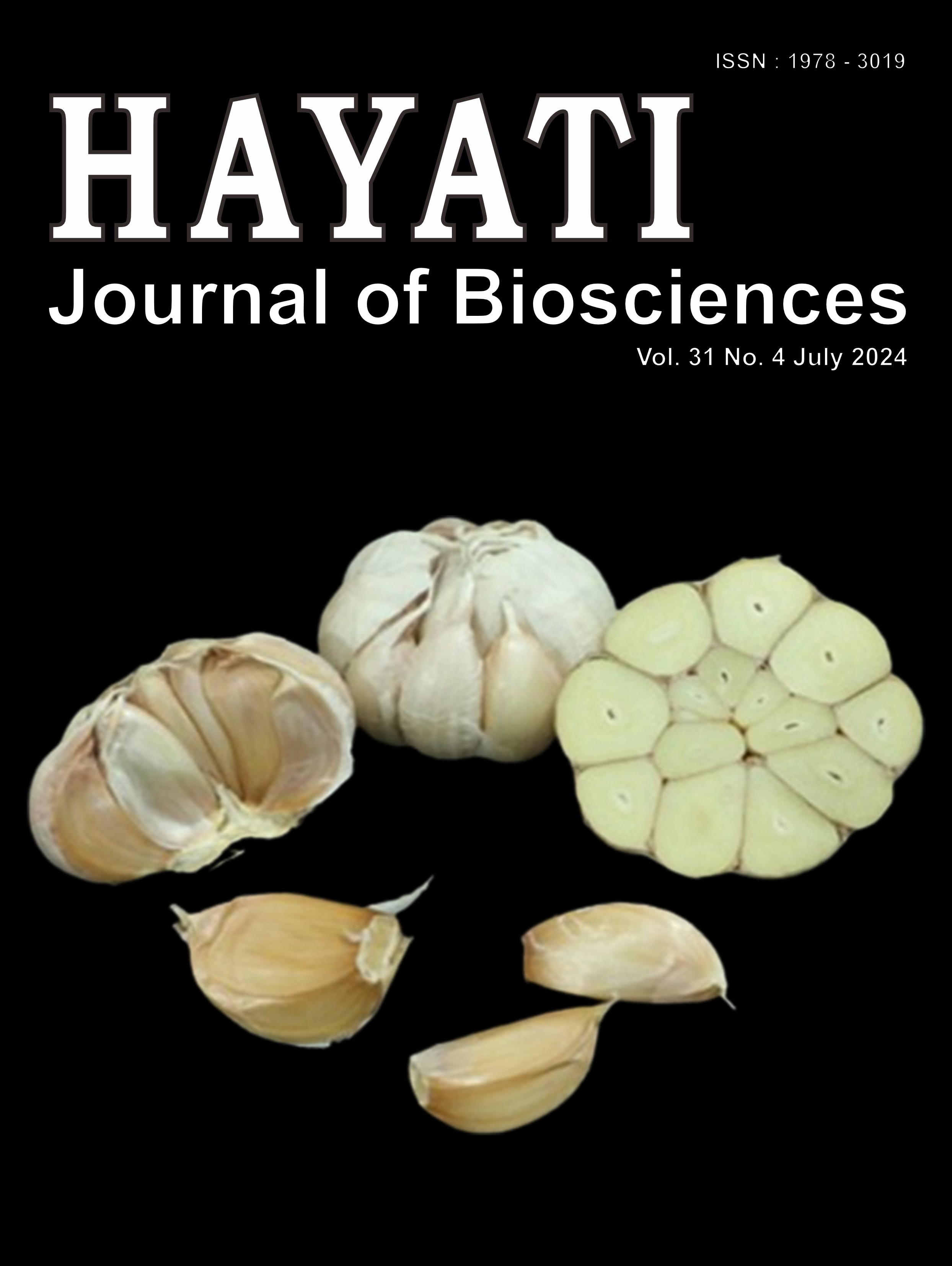Potential of Clitoria ternatea L. Extract Towards Insulin Receptor Expression and Marker of Inflammation in Diabetes Mellitus Rats Model
Abstract
Metabolic abnormalities caused by the accumulation of human, environmental, genetic and lifestyle variables can be found in diabetes mellitus (DM). An increase in blood glucose carried on by a reduction in insulin production can also result in DM. Insulin resistance often occurs as a result of obesity and a lack of physical activity and aging. Telang flower extract (Clitoria ternatea L.) is reported to have several qualities such as being able to treat DM, chronic bronchitis, goiter, mucosal disorders and leprosy. This study’s objective was to elucidate anti-dibetic effect of C. ternatea extract (CTE) in rats with diabetic complications related to dyslipidemia. Rats suffering from diabetes will be examined after being given oral doses of Simvastatin 0.9 mg/kg BW, Glibenclamide 0.45 mg/kg BW, and 200, 400, and 800 mg/kg BW CTE, model induced by streptozotocin. The expression of the insulin gene (INS-1) was investigated by qRTPCR, Tumor Necrosis Factor-α (TNF-α), and Interleukin-1β (IL-1β) pancreatic DM rats model using the Immunohistochemistry (IHC) test. Both descriptive and quantitative data were acquired for the data. After utilizing ANOVA to evaluate quantitative data, the Tukey post hoc test was used to analyze the data, the expression of TNF-α and IL-1β was found to decrease while INS-1 expression increased in response to CTE. This effect was attributed to the modulation of TNF-α, IL-1β, and INS-1 expression. These findings suggest that CTE possesses antidiabetic properties.
Downloads
Copyright (c) 2024 Djaja Rusmana, Hartini Tiono, Wahyu Widowati, Johan Lucianus, Lusiana Darsono, Philips Onggowidjaja, Rita Tjokropranoto, Vera Vera, Edwin Setiabudi, Selonan Obeng, Hanna Sari Widya Kusuma, Agung Novianto

This work is licensed under a Creative Commons Attribution-NonCommercial 4.0 International License.
HAYATI J Biosci is an open access journal and the article's license is CC-BY-NC. This license lets others distribute, remix, tweak, and build upon author's work, as long as they credit the original creation. Authors retain copyright and grant the journal/publisher non exclusive publishing rights with the work simultaneously licensed under a https://creativecommons.org/


















.png) IPB University
IPB University Department of Biology
Department of Biology The Indonesian Biological Society
The Indonesian Biological Society 

